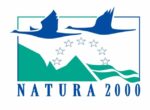Saving Wildcats
Breeding for release and mitigating threats to wildcats in Scotland
Saving Wildcats is a European partnership project dedicated to European wildcat (Felis silvestris) conservation and recovery. This initiative aims to prevent the extinction of wildcats in Scotland by breeding and releasing them into the wild, building on the work of Scottish Wildcat Action, the first national conservation plan for wildcats that aimed to restore a viable population to the Highlands.
Saving Wildcats has constructed a Conservation Breeding for Release Centre, consisting of 8 breeding enclosures and 20 pre-release enclosures, all contained within a biosecure perimeter. In a quiet location at the Royal Zoological Society of Scotland’s Highland Wildlife Park in the Cairngorms National Park, the centre brings together wildcat experts, a dedicated veterinary unit and a specialised pre-release management to help develop the necessary skills needed for a challenging life in the wild.
Eight founder pairs of wildcats have been assembled in the breeding enclosures and over 20 kittens born in the first year of breeding. Following a pre-release training programme to prepare for life in the wild, 20 wildcats will be released each year, in an area within the Cairngorms National Park.
In parallel, the initiative works to mitigate threats facing wildcats in other areas of the Highlands in preparation for future releases and is working with local communities to understand how best people can benefit from the presence of wildcats. Saving Wildcats is as much about people as it is about wildcats, helping to boost local economies through wildlife tourism and creating employment opportunities.
1. To remove threats to wildcats from a release site within the Scottish Highlands.
2. To increase the population of wildcats at the release site through augmentation.
3. To establish a source population of wildcats suitable for release.
4. To support the reduction of risk to wildcats across the rest of the Scottish Highlands by developing a framework for the long-term sustainability and socioeconomic benefits of wildcat conservation and sharing the results across Scotland and Europe.
• Eight founder pairs of wildcats have been assembled in the breeding enclosures and 22 kittens born in the first year of breeding.
• Habitat suitability has been assessed throughout the release area and potential release sites identified within the Cairngorms National Park.
• The project has obtained a translocation licence from NatureScot granting permission to release wildcats in the release area.
• Threat mitigation is ongoing from persecution and hybridisation.
• A release strategy has been developed and this is currently being finessed around staggered releases in the summer of 2023.
• Outreach and engagement is ongoing with key stakeholders (land managers and pet owners) and the wider community.

Saving Wildcats is a European partnership project dedicated to European wildcat (Felis silvestris) conservation and recovery. This initiative aims to prevent the extinction of wildcats in Scotland by breeding and releasing them into the wild, building on the work of Scottish Wildcat Action, the first national conservation plan for wildcats that aimed to restore a viable population to the Highlands.
Saving Wildcats has constructed a Conservation Breeding for Release Centre, consisting of 8 breeding enclosures and 20 pre-release enclosures, all contained within a biosecure perimeter. In a quiet location at the Royal Zoological Society of Scotland’s Highland Wildlife Park in the Cairngorms National Park, the centre brings together wildcat experts, a dedicated veterinary unit and a specialised pre-release management to help develop the necessary skills needed for a challenging life in the wild.
Eight founder pairs of wildcats have been assembled in the breeding enclosures and over 20 kittens born in the first year of breeding. Following a pre-release training programme to prepare for life in the wild, 20 wildcats will be released each year, in an area within the Cairngorms National Park.
In parallel, the initiative works to mitigate threats facing wildcats in other areas of the Highlands in preparation for future releases and is working with local communities to understand how best people can benefit from the presence of wildcats. Saving Wildcats is as much about people as it is about wildcats, helping to boost local economies through wildlife tourism and creating employment opportunities.

1. To remove threats to wildcats from a release site within the Scottish Highlands.
2. To increase the population of wildcats at the release site through augmentation.
3. To establish a source population of wildcats suitable for release.
4. To support the reduction of risk to wildcats across the rest of the Scottish Highlands by developing a framework for the long-term sustainability and socioeconomic benefits of wildcat conservation and sharing the results across Scotland and Europe.
• Eight founder pairs of wildcats have been assembled in the breeding enclosures and 22 kittens born in the first year of breeding.
• Habitat suitability has been assessed throughout the release area and potential release sites identified within the Cairngorms National Park.
• The project has obtained a translocation licence from NatureScot granting permission to release wildcats in the release area.
• Threat mitigation is ongoing from persecution and hybridisation.
• A release strategy has been developed and this is currently being finessed around staggered releases in the summer of 2023.
• Outreach and engagement is ongoing with key stakeholders (land managers and pet owners) and the wider community.




